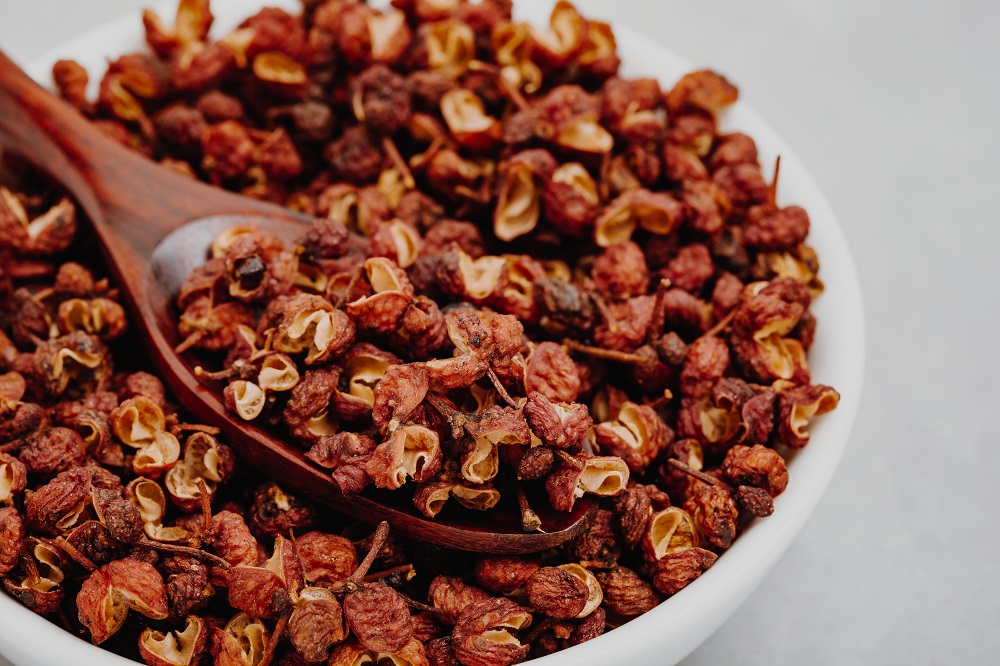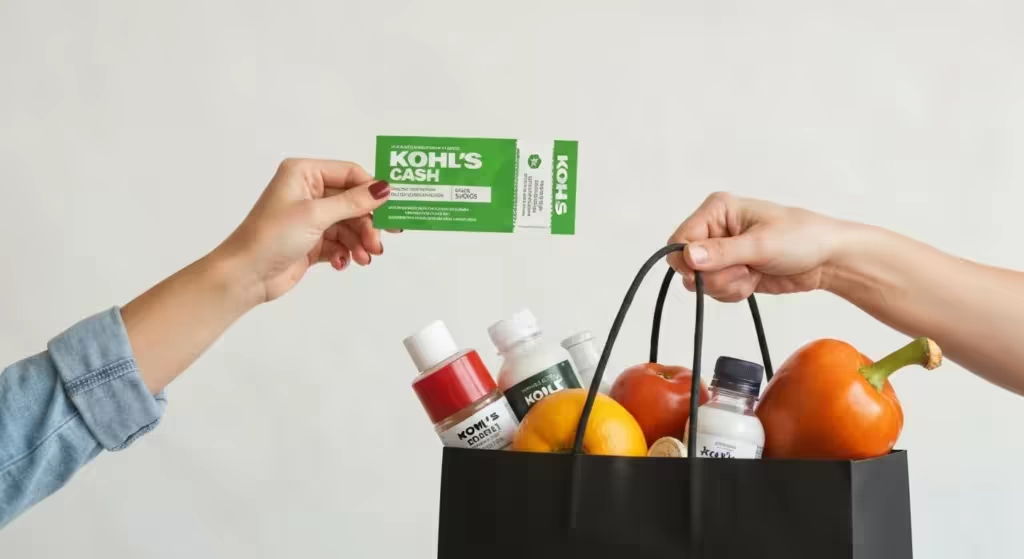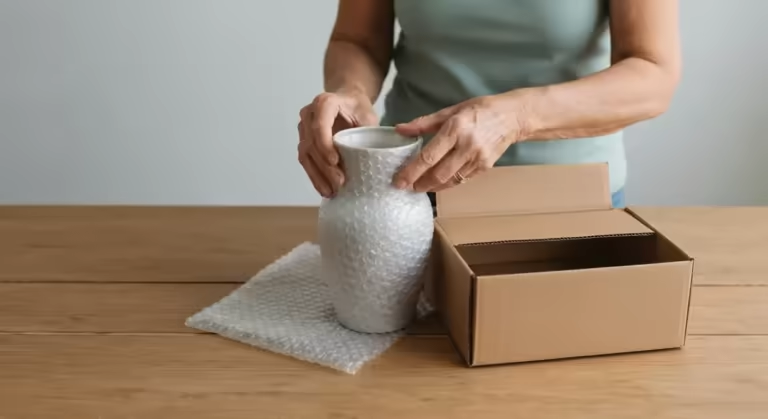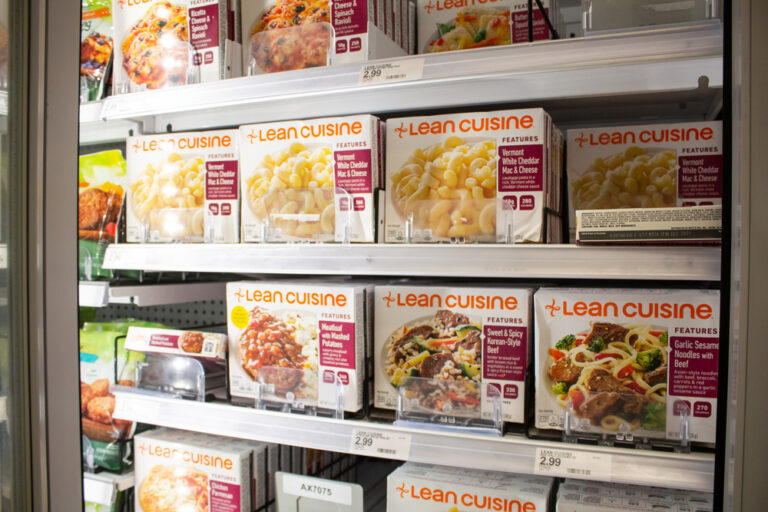Grocery shortages of 2025 will affect everyone, so it might be a good idea to buy them before they (completely) disappear from the shelves!
I don’t know about you, but I am extremely concerned about the current situation with the tariff increase and the flood of daily bad news. The headlines feel relentless, each one painting a grimmer picture of our economic future. The U.S.-China trade war is only worsening, with China imposing reciprocal tariffs on American goods and some Chinese exports being hit with triple-digit tariffs. This isn’t just some abstract economic policy discussion happening in a faraway capital; it’s a series of decisions that will have very real, tangible effects on the items we put in our shopping carts every week.
For me, the typical American consumer, this means that regardless of where the financial impact is first felt—be it by the importer, the distributor, or the wholesaler—the cost will inevitably trickle down. The tariffs may eventually cause some imported ingredients and grocery items to become significantly pricier or perhaps unavailable altogether. It’s a slow-creeping dread, realizing that the global supply chain is a lot more fragile than we ever imagined and that a political decision made thousands of miles away could mean my favorite brand of soy sauce doubles in price or vanishes entirely.
It’s overwhelming, and for some reason, I get the exact feeling I had back in 2020 when the COVID-19 pandemic started and everybody was rushing to the nearest supermarket to buy everything they could. It’s that same pit in my stomach, that sense of urgency mixed with uncertainty. Back then, it was toilet paper and hand sanitizer; now, it feels more targeted, more focused on the very foods that make up our family’s favorite meals. The empty shelves of 2020 taught us a valuable lesson about preparedness and how quickly “normal” can change.
From baby formula to canned goods, and even sriracha, it seems like there is a new “sorry, we’re out” sign popping up every year. Each shortage chips away at our sense of security and forces us to be more strategic about our shopping. You may want to call me old-fashioned, or maybe even an alarmist, but I’ve started stockpiling early because of this. I see it as being proactive, not panicked. It’s about building a buffer for my family against future price hikes and unavailability, ensuring we can still enjoy our meals without breaking the bank.
Because I love giving my readers good advice, tips, and tricks on how to survive this inflation and navigate these challenging times, in the following lines we will talk about the grocery shortages of 2025 and all the grocery items that may be the first to go extinct. This isn’t meant to scare you, but to empower you. Think of this as a strategic guide so you know what to buy on your next shopping trip to build a resilient and well-stocked pantry.

Sichuan Peppercorns
The list of grocery shortages of 2025 starts with the one and only Sichuan peppercorn, which is a staple in my pantry since my family loves to cook with it. If you’ve ever had authentic Mapo Tofu or Kung Pao Chicken, you’ve experienced its magic. It provides that unique, tingling, numbing sensation known as “málà” (麻辣) that is utterly addictive and central to the cuisine of its namesake province.
It is nearly impossible to find a replacement for Sichuan peppercorns, an essential ingredient of Chinese cuisine. It’s important to know that they are not related to black peppercorns or chili peppers; they are the dried husks of the prickly ash shrub. This spice, known for its searing heat combined with that signature citrusy, numbing effect, may soon become harder to find on supermarket shelves. This could have a big effect on Sichuanese restaurants that may need to alter their menus or use different ingredients, potentially disappointing legions of loyal customers who come for that authentic flavor.
I once tried to make a dish with a suggested “substitute” of black pepper and coriander, and the result was profoundly disappointing. It completely lacked the soul of the dish. What am I going to do as an avid lover of this item? I will try to buy more of it and hope that when the jar is empty, the situation with the groceries will be milder, so I will be able to buy it again. Whole peppercorns last a long time when stored in an airtight container, so buying a larger bag now is a smart investment. If you like Sichuan peppercorn as much as I do, I suggest you hurry and buy some until the stock runs out.
Chinese Dark Soy Sauce
What can I say? I love Asian cuisine. Since I’ve had to deal with some health issues and my doctor asked me to follow a strict diet, I tried to do my best to stick to it. In addition to natural proteins, vegetables, and fruits, I also tried to enhance the flavor of my dishes without adding excess salt or fat. That was the time when I first discovered how amazing soy sauce is, and we have had an awesome relationship since then. Imagine how upset I was when I saw that they are planning to raise their price, and eventually, it will disappear from grocery shelves.
Because Chinese soy sauce is subject to a 145% tariff, it may be challenging to find the ingredient, and alternative sauces may need to be used until the import taxes are removed. This specific tariff is a huge blow because Chinese dark soy sauce is not easily replaceable. While many are familiar with standard or “light” soy sauce, the dark variety is a different beast altogether. It’s less salty, aged longer, and often has molasses or caramel added, giving it a viscous, rich consistency and a hint of sweetness.
For those who don’t know, Chinese soy sauce, in particular the darker variety that is sweeter and more dense, has a distinct flavor and thickness. Its primary role is often to add a beautiful, deep mahogany color to braised dishes like red-braised pork belly (hong shao rou). Chinese soy sauce is made with wheat flour, whereas Japanese soy sauce is made with roasted wheat, which contributes to the fundamental difference in their flavor profiles. Losing access to authentic dark soy sauce means losing a key tool for creating visually stunning and deeply flavorful food.
Sesame Paste
After I’ve read multiple articles about the grocery shortages of 2025, roasted sesame paste is one ingredient I’ve been keeping an eye on on supermarket shelves. Every time I go to my local Asian market, I check the stock levels, and I’ve already bought a few extra jars to keep in the back of my pantry. It’s a cornerstone of some of my most-loved recipes.
It’s absolutely a must to add to a lot of my favorite Chinese dishes, particularly sesame noodles and dan dan noodles. Although it may resemble tahini in appearance, it is entirely different—richer, darker, and far more flavorful. The key difference lies in the preparation of the sesame seeds. Tahini is typically made from raw or very lightly toasted seeds, giving it a mild, earthy flavor. Chinese sesame paste, however, is made from seeds that have been deeply toasted, unlocking an intense, smoky, and profound nutty flavor that tahini simply cannot replicate.
Mala Market says the type I use is made from Xinjiang-grown sesame seeds that are deep-toasted in Shandong, China. The issue? This stuff could become so costly if tariffs increase that I’ll have to start making cuts or, worse, find a less tasty alternative. The rich, creamy texture it imparts to sauces is just as important as its flavor. Nothing else, to be honest, comes close to creating that authentic, mouth-coating, savory experience that makes a bowl of dan dan noodles so unforgettable.
Zhenjiang Vinegar
For all the Zhenjiang Vinegar fans, I have some bad news: due to tariffs, you may not be able to see it on the supermarket shelves anytime soon. This isn’t just any old vinegar; it’s a specific type of aged black vinegar from the city of Zhenjiang in Jiangsu province. It has a protected designation of origin, much like Champagne in France. Its unique malty, woody, and slightly sweet flavor is a result of its production from glutinous rice and a long aging process.
Even chefs at restaurants are rushing to buy it, according to what I read in The New York Times. Portland importer Susie Kasem claimed to be overloaded with calls, saying, “Everyone is calling me today, yesterday, and the day before.” To be honest, I don’t blame them—this vinegar gives food a unique depth, and I also don’t want to run out. It’s the essential acidic counterpoint in dipping sauces for soup dumplings and potstickers, and it provides the complex sour note in classic sweet and sour dishes. Trying to substitute it with a standard rice or balsamic vinegar would be a culinary crime.

Frozen seafood
Rich in protein and low in calories, seafood was my best buddy when I was following a low-calorie diet. And even if I am healthier now and I no longer follow a strict diet, I still buy frozen seafood and stock up on it for delicious recipes. Bags of frozen shrimp, tilapia, and squid are staples in my freezer for quick weeknight dinners. You can imagine my disappointment when I saw this item included in the list of grocery shortages for 2025.
The United States imports a significant amount of fish, shellfish, and squid from China’s frozen seafood processing facilities. What many people don’t realize is the complexity of this supply chain. Often, seafood like Alaskan pollock is caught in U.S. waters, sent all the way to China for low-cost processing (like filleting and deboning), and then re-imported back to the U.S. for sale. Tariffs throw a major wrench in this entire global operation. The United States currently imposes a 170% tariff on imports of squid from China, but this could change at any point, and this is very disturbing.
This isn’t just about exotic items. This disruption affects the affordable fish fillets and shrimp that many American families rely on as a healthy and convenient source of protein. Squid, octopus, oysters, prawns, and many others may become much pricier and difficult to find in stores as a result, and they may also be taken off restaurant menus until the issue is resolved. It’s a good time to clear some space in your freezer and stock up on a few extra bags of your favorites.
Shaoxing Wine (or the cooking wine)
The most popular kind of Chinese cooking wine is Shaoxing wine, which is used “by the gallon” in traditional Chinese cooking. If Sichuan peppercorns are the soul of Sichuan cuisine, Shaoxing wine is the foundational lifeblood of a vast range of Chinese regional dishes. The tariffs may significantly affect the cost of this wine, making a core ingredient suddenly feel like a luxury. Shaoxing wine offers complexity and depth of flavor, much like regular wine does in Western cuisine.
I would even say that Shaoxing wine is used in almost all of the Chinese recipes I cook regularly. It’s indispensable for marinating meats to remove any “gamey” flavors, for adding an aromatic splash to a sizzling stir-fry, and for creating rich, savory braising liquids for dishes like Drunken Chicken or Dongpo Pork. Its unique flavor—a combination of savory, slightly sweet, and nutty notes—is simply irreplaceable. Using a dry sherry is a common substitution, but it’s a pale imitation that lacks the authentic, rich character of true Shaoxing wine.
…psst! With so many items to stock up on, you will definitely need a durable, heavy-duty bag to carry your groceries. So why not buy a reusable one, save the environment, and also have it for many years? On Amazon, you can find a plethora of options, but I will give you the link to my favorite one that costs around $6!
Chili crunch
Chili crisp is another ingredient that I use for almost every dish, but now I am worried that I might need to switch things up since it’s among those grocery items that will either be super expensive or completely disappear from the shelves. I put it on eggs, noodles, rice, vegetables—you name it. It’s more than just a hot sauce; it’s a condiment that adds flavor, umami, and, most importantly, texture.
The “crunch” comes from crispy fried bits of chili, garlic, shallots, and sometimes fermented soybeans, all suspended in a fragrant oil. In an interview I read yesterday, Fly By Jing’s COO, Matt Dunaj, explained that since all of the ingredients are imported from Jing’s hometown of Sichuan, China, they are unable to create the item in the United States. There is simply no substitute for the authentic flavor that comes from there. This isn’t just about a recipe; it’s about *terroir*. The specific varieties of chilies, like Erjingtiao, and the Sichuan peppercorns grown in that region’s soil and climate have a unique aroma and flavor profile that cannot be replicated elsewhere. Tariffs on these core components threaten the very existence of these beloved products as we know them.
Coffee
I am pleased that I always buy a little more coffee than I need, just to be certain I will never wake up in the morning and discover that my energy fuel is no longer in my pantry. For me, and for millions of others, the morning coffee ritual is non-negotiable. I had hoped that coffee wouldn’t be on the list, but with the skyrocketing prices of many imported items, its inclusion is unfortunately no surprise. The U.S. simply cannot grow coffee at the scale it consumes it, making us entirely dependent on imports.
Since a substantial quantity of coffee is imported into the United States from nations like Ethiopia, Colombia, and Brazil, price increases and possible shortages could result from tariffs on these imports. This is compounded by the fact that the coffee supply chain is already under immense stress from climate change. Unpredictable weather, droughts, and frosts in key coffee-growing regions have already caused prices for green coffee beans to spike. Tariffs would be a devastating second blow, impacting not just home brewers but also the thousands of small, independent coffee shops that operate on razor-thin margins and can’t easily absorb such a massive cost increase.
Rice
The rice that is sold in every grocery store is produced in the United States, but it also imports varieties from Thailand and India, such as basmati and jasmine rice. Tariffs on these imports may affect availability and prices. To suggest that these varieties are interchangeable with standard American long-grain rice is to misunderstand their profound cultural and culinary importance.
Telling a family to use regular rice for a Thai green curry is like telling them to use ketchup instead of a marinara sauce for pasta. The fragrant, slightly sticky, and floral notes of jasmine rice are essential to Southeast Asian cuisine. Likewise, the long, elegant, and separate grains of aged basmati rice are the only choice for a proper Indian biryani or Persian polo. For millions of Americans from diverse cultural backgrounds, these specific types of rice are not just food; they are a connection to their heritage. A tariff on them is a tax on culture itself, and it could make staple meals for countless families much more expensive.
Now, I want to hear your opinion regarding this situation with the grocery shortages of 2025. What’s the one item in your pantry you’d be devastated to lose? Have you started stocking up, and do you have any tips to share? Do you think things will eventually come back to normal? Or this is the new normal for us, the American citizens. Let me know your thoughts in the comments below. Sharing information and strategies is the best way we can all get through this together.
Inflation isn’t a joke, so if you’re also concerned about huge bills, check out this article: Save Water at Home: 5 Easy Tips That Make a Big Difference.














